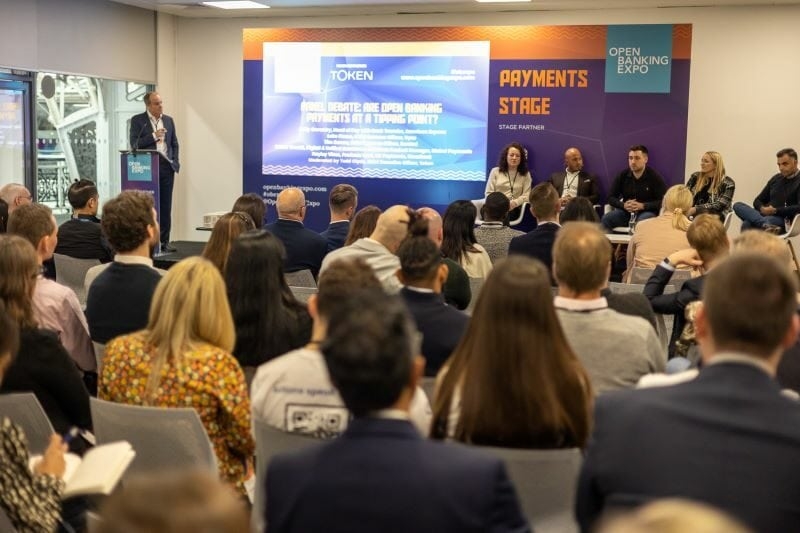A combination of education and experimentation with branding the payments ‘button’ at checkout will help to convert consumers to adopt Open Banking payments, according to a panel debate at Open Banking Expo UK in London on 4 November.
During the session, titled ‘Are Open Banking payments an unstoppable force?’ moderated by Token CEO Todd Clyde, he explained that what was meant by account-to-account (A2A) payments is a “payment that settles over the national clearing systems, not a payment that settles over the credit card rails nor a payment that settles over a wallet”.
Holly Coventry, head of Pay with Bank Transfer at American Express, told delegates that she had seen “much higher conversion” through in-store, citing its live proposition with the retailer Richer Sounds as an example.
“A lot of that is driven by customer experience,” she said, noting that “customers are never going to sit and talk about how great a payment journey was”.
“The ability to make that journey as smooth as possible and deliver that to merchants in-store offers huge opportunity to bring that to life for people,” Coventry added.
Vyne chief revenue officer Luke Flomo agreed that it is important “that in a face-to-face environment you have the ability to educate the consumer”, but he added that there is a need to build consumer education around A2A payments in an ecommerce environment.
“One of the key things is educating the consumer before they get to the checkout. It’s not just about education in that user journey, but educating prior to that user journey. You can drive conversion but you really need to work with the retailer to understand their consumer demographic,” Flomo said during the panel session.
Panellist Tim Renew, chief revenue officer at Banked, explained that the firm’s Open Banking payments proposition is live across Europe and that it also has a proof of concept going live in the US.
“What we found is merchants don’t really care how you pay – all they care is if the consumer converts,” he said.
Speaking about the payment button at checkout, Renew said that just by branding it ‘pay by bank’, the conversion rate went from 30% to 60% “because people started understanding it”.
“It doesn’t just become a static button on the website, it becomes a conversion tool to help you get a better lifetime value from the consumer,” he added.
ClearBank’s UK payments lead Hayley Viner observed that adoption of A2A payments has increased, but added that it is still “one way in terms of traffic, so it’s consumer to the retailer or corporate [that] you’re looking to buy goods or services from”.
“I think we need to look more at the payments-to-consumer end of the journey,” Viner told delegates.
“If you do want a refund on goods or services, how does that work? How do we make sure that footprint is available to consumers to benefit from the real time and settlement finality that you get from Open Banking payments? It could be a game changer from a customer servicing perspective.”
The panel was divided about whether A2A payments are at a “tipping point”, or just at the start of it.
But Ketan Thanki, digital and unified commerce solutions product manager at Global Payments, believes that some challenges remain.
He explained that Global Payments is exploring an Open Banking as a payment proposition within the UK market.
For him, the challenges are around “usability and experience” for consumers, “especially around real-time fund transfer”.
He added that they were “not insurmountable challenges but areas we’re looking to consider as we stand up a proposition”.
In another panel session at the Confex in London on 4 November delegates heard from speakers about why the UK Open Banking ecosystem is “mature enough” for VRPs and sweeping.
Image from far left to right: Todd Clyde, Holly Coventry, Luke Flomo, Tim Renew, Hayley Viner and Ketan Thanki.











